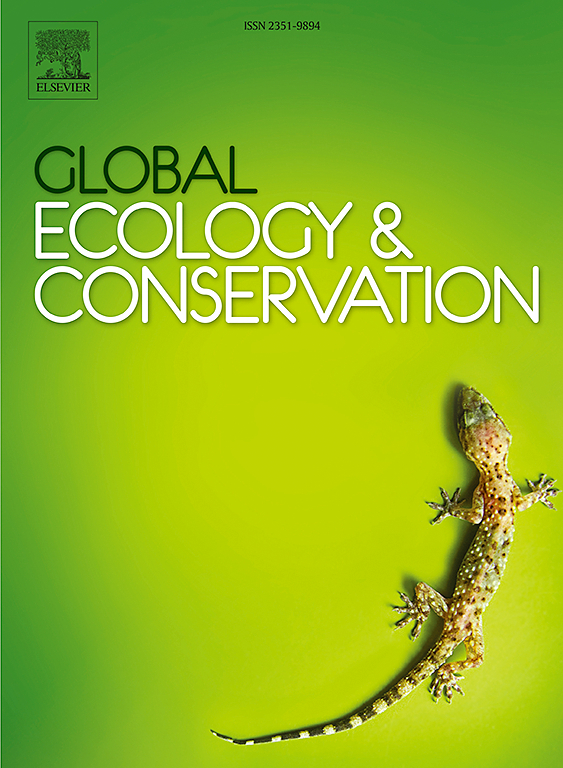Characterizing fine-scale spatiotemporal variations in canopy litterfall and fine root dynamics in cool temperate forest ecosystems
IF 3.5
2区 环境科学与生态学
Q1 BIODIVERSITY CONSERVATION
引用次数: 0
Abstract
Aboveground canopy and fine roots, two key allocations of autotrophic productivity in forest ecosystems, create a dynamic pathway for carbon and nutrient entry into the soil during senescence and decomposition. Despite their relevance, little is known about the local factors influencing canopy litter and fine root variability, both within stands and across years, which hampers our understanding of plant mineral nutrient status in cool temperate environments. This study combined up to four years of field measurements (2–4 years for litterfall, 1 year for fine root stocks, and 2 years for fine root production and mortality) from twelve 0.02–0.09-ha stands in Gwangneung Experimental Forest to investigate the relationships between litter and fine root variability and stand topographic, structural, and edaphic features. Topography emerged as a key driver of variation within stands, significantly influencing total litterfall (= −0.568 for elevation; = −0.597 for slope), leaf litterfall (= −0.722 for elevation), total fine root biomass ( = −0.863 for slope), and < 1mm-sized root biomass (= −0.618 for slope). Miscellaneous litter exhibited less variability within stands as the basal area increased. Soil magnesium content positively correlated with within-stand fine root biomass variation at depths of 15–30 cm but exhibited an inverse relationship with fine root necromass variation at 5–10 cm. Within-stand variability of fine root mortality increased with soil organic matter, highlighting its critical role in nutrient bioavailability. Our findings underscore the importance of local environmental factors in shaping the spatiotemporal variability of litter and fine roots, offering insights into the carbon and nutrient cycling in cool temperate forests amid environmental change.
求助全文
约1分钟内获得全文
求助全文
来源期刊

Global Ecology and Conservation
Agricultural and Biological Sciences-Ecology, Evolution, Behavior and Systematics
CiteScore
8.10
自引率
5.00%
发文量
346
审稿时长
83 days
期刊介绍:
Global Ecology and Conservation is a peer-reviewed, open-access journal covering all sub-disciplines of ecological and conservation science: from theory to practice, from molecules to ecosystems, from regional to global. The fields covered include: organismal, population, community, and ecosystem ecology; physiological, evolutionary, and behavioral ecology; and conservation science.
 求助内容:
求助内容: 应助结果提醒方式:
应助结果提醒方式:


